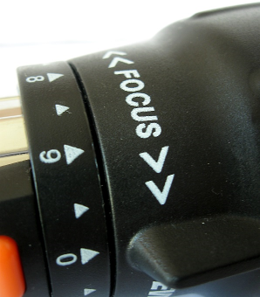Create Content Faster
One thing that you come to realize when you start an online business is that there are a lot of things you need to do that require you to create content. Some days it can seem like all you do is write and create content all day long.
Have you ever sat down and figured out how long it takes? How long does a blog post take from idea to being live on your site? How long does it take to write your email messages? How long does it take to write a review? Or a sales page? Or record a "short" video?
Chances are, it takes up a lot of your time. If you could create content faster, you will spend less time to get the same result. Time you can spend on marketing and doing the things necessary to bring income into your business.
There are a few simple things that you can do right now that will speed up the time it takes to create content, and make it easier too.

Work In Sprints
What I mean by work in sprints is that you choose one type of content, and you create a lot of it. The time isn't really that important, but the idea is to create several pieces of content of the same type.
A good example is writing email messages. Instead of writing one email, and then moving on to other tasks, write a series of emails. If you send out several emails every week, you can write them all at once.
The same thing applies to articles for your blog. If you try to write and post one article a day, do it all at once.
When you create content in sprints, you can concentrate on one type of content each day. You won't have to write and send an email first thing in the morning, and then come up with a blog post next. And then concentrate on your social media content. And then record and upload a video.
You can set aside each day for each type of content. That is your only focus, so you will be able to get a lot more content in less time.

Set A Time Limit
Another common practice is to set a time limit for each writing session, and then take a break. A popular way to work like this is called the Pomodoro Technique. You can read more about it here.
The way it works is that you set a timer and work for 25 minutes, and then take a 5 minute break. Then you sit down and get busy. After you do this 4 times, take a longer bread of 15-30 minutes.
Taking short breaks can actually lead to getting more done than you would if you kept going at it for longer stretches of time.
The time limits and break times aren't the key. You may find that you prefer to work more than 25 minutes at a time, or less. The idea is to break down your task into manageable chunks of time.
It can be more of a challenge if you start your day thinking that you have to write for 4 or 5 hours. If you break it down into segments, it seems easier. That's been my experience.
Eliminate Distractions
It's easy to get caught up doing things that aren't really necessary, and end up wasting time. For example, if you have the habit of watching television or listening to the radio while you work, see if you find yourself focusing on that instead of your work. At least sometimes.
Distractions are everywhere. Consider the following and ask yourself if they’re distractions for you:
- Social media
- Music
- Phone
- Family members
- Chores
Believe me, multitasking really isn’t possible. If you start watching TV, you're not doing the work. If you're listening to the news, you aren't working. What ends up happening, without you realizing it, is that it takes longer to things done.

Create Content When You're At Your Best
Another big factor in how effective you are when you create content is the time of day you do it. If you're ready to go after your first cup of copy, then that is when you will get more done.
If you have a hard time getting going in the morning, and you are alert and focused in the afternoon or after dinner, then do it then.
Don't try to make yourself create content just because you have to, and you have to do it right now. Schedule your content creation sessions for the time of day when you are at your best.
Use An Outline
Using an outline is your secret weapon when it comes time to create content. An outline gives you a map to follow, a way to get from the start of your content to the end.
This doesn't only apply to writing. It works for video and audio as well. When you have an outline, you know what areas you want to cover. An outline speeds up the time it takes, and it makes it a lot easier. Give it a try.
Be Flexible
There are some days when everything is going smooth. Ideas flow and you get a lot content done, and it seems like it didn't take long at all. Does that mean that you should stop once you reach your goal?
No way! There are no hard and fast rules that you have to follow. If you are having a lot of success writing articles, and you get done sooner than you expected, and you feel like writing more, then do it.
If you created all of the content you had scheduled, you can move on to what you have scheduled for the next day.
What this does is make up for the days when you just can't seem to make any progress, and you end up doing less than what you had planned.
The extra content you create on your "flow" days will make up for the slow days.
Write Now, Edit Later
Do you find yourself rewriting the same sentence several times because you’re trying to make it grammatically correct? Do you use spellcheck more often than the “enter” key on your keyboard? If this sounds like you then you may benefit from trying this tactic.

Write your entire piece of content without editing anything. Don't be too concerned about misspellings, or even proper grammar. You don't want to get sloppy, but don't try to be a perfectionist.
After you create content, walk away and do something else. If you let it sit for a day or two, you can come back with a fresh outlook and start editing the content. It won't take long to make any changes, and then you can use the content to build your business.
The reason this approach works is simple. Each time you halt the writing process and edit, you’re stopping the thought flow. When it’s time to return to the writing process and putting words on paper, you have to shift gears again. It may not seem like the shift in focus is significant, however it does slow you down.
Give it a try. You may be surprised by how quickly you are able to write content when you don’t stop to edit. In fact, you may need to experiment with several of these tactics to find the strategies that work best for you. For example, you may find that outlining your content actually slows down your writing process because you feel too restricted. Conversely, you may also find that working in batches cuts your writing time in half.
Go from zero content, zero ideas to being the hero of your family and friends by creating your own in-demand profitable info product ready to take orders in the next month! How is that even possible? Let Me Show You…
